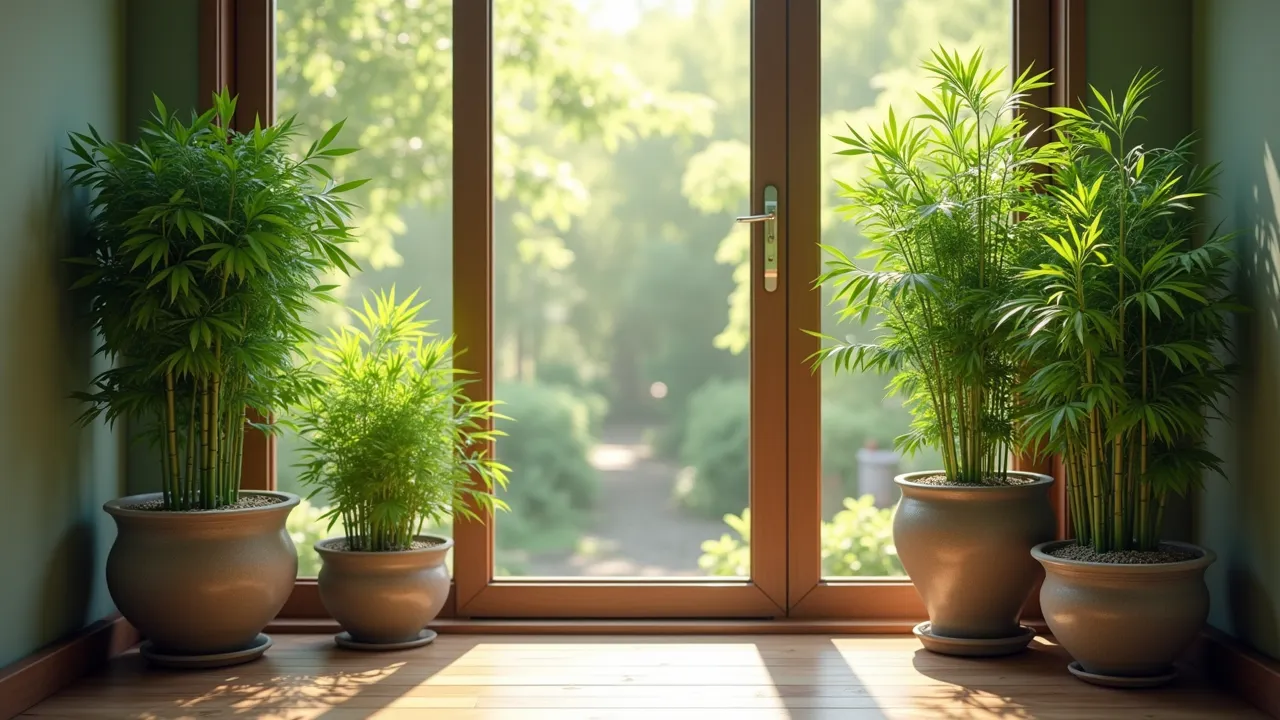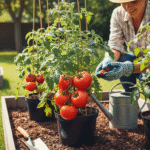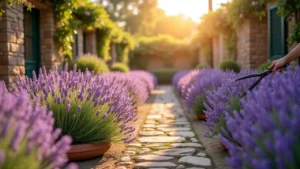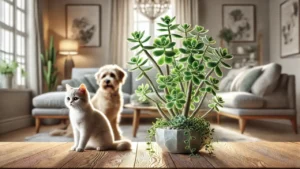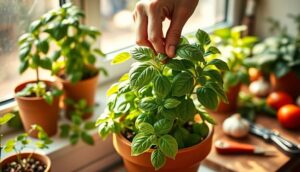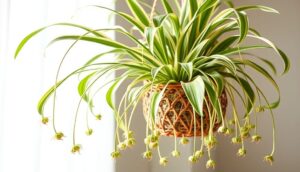Bamboo — a symbol of strength, prosperity, and peace — is one of nature’s most fascinating and versatile plants. Whether you’re admiring tall, whispering stalks swaying in your garden breeze or a sleek, lucky bamboo gracing your indoor desk, this plant effortlessly adds life and balance to any space.
As a gardener with over two decades of hands-on experience nurturing everything from fragile orchids to resilient palms, I’ve found bamboo to be one of the most rewarding plants to grow. It’s elegant, fast-growing, and surprisingly adaptable — but it does require the right care to stay lush and vibrant.
In this guide, I’ll share everything you need to know about how to care for a bamboo plant — from sunlight and soil to watering and pruning — along with my tried-and-true bamboo plant care tips that make all the difference.
Table of Contents
🌱 Bamboo Plant Overview
Before diving into care routines, it’s important to understand the plant itself. Not all bamboo is the same. There are two main categories:
- True Bamboo – Belongs to the grass family Poaceae. These are the tall, woody types often seen outdoors.
- Lucky Bamboo (Dracaena sanderiana) – Despite its name, it’s not a true bamboo but a tropical water plant. It’s a favorite for indoor décor and feng shui enthusiasts.
Both varieties share one thing in common: their symbolism of resilience, strength, and good fortune. Yet, their care slightly differs depending on where you grow them — indoors or outdoors.
📋 Bamboo Plant Quick Care – Table Format
| Scientific Name | Bambusoideae (True Bamboo), Dracaena sanderiana (Lucky Bamboo) |
|---|---|
| Common Name | Bamboo / Lucky Bamboo |
| Native Region | Asia (mainly China and Southeast Asia) |
| Light Requirements | Bright, indirect sunlight (indoor); partial to full sun (outdoor) |
| Watering Needs | Keep soil moist but not soggy; avoid stagnant water |
| Propagation | Division or cuttings |
| Toxicity | Non-toxic to humans; mild irritation for pets if ingested |
| Growth Rate | Fast (up to 3 feet per year outdoors) |
| Ideal Temperature | 18°C – 32°C (65°F – 90°F) |
🌾 Bamboo Plant Requirements – Table Format
| Hardiness | Moderate |
|---|---|
| Climate Zones | USDA Zones 5–11 (varies by species) |
| Plant Type | Perennial grass (True Bamboo), Tropical (Lucky Bamboo) |
| Plant Family | Poaceae (True Bamboo), Asparagaceae (Lucky Bamboo) |
| Plant Genus | Bambusa, Phyllostachys, Dracaena |
| Season of Interest | Year-round foliage |
| Height | 1–100 feet (depending on species) |
| Spread | Spreads via rhizomes or roots |
| Spacing | 3–5 feet apart outdoors |
| Depth | 1–2 inches below soil for divisions |
| Maintenance | Moderate |
| Soil Type | Loamy, rich, well-draining |
| Soil pH | Slightly acidic (6.0–6.5) |
| Soil Drainage | Excellent drainage essential |
🌤️ How to Care for a Bamboo Plant
🌞 Bamboo Plant Light Requirements
Bamboo thrives in bright, indirect sunlight. Outdoors, it can handle partial to full sun depending on the variety. Indoor lucky bamboo prefers filtered light — too much direct sunlight can scorch its leaves.
Don’t: Place indoor bamboo in dark corners or under harsh midday sun.
Do: Rotate the pot occasionally so all sides get equal light exposure.
🌿 Pro Gardener Tip: If your indoor bamboo leaves start yellowing, it’s likely getting too much direct sunlight. Move it to a shadier spot, and you’ll see the recovery in a week or two.
💧 Bamboo Plant Watering
Proper watering is the secret to lush, green bamboo. Keep the soil consistently moist, but never waterlogged.
- For outdoor bamboo, water deeply once or twice a week, more often in dry, hot weather.
- For lucky bamboo grown in water, ensure the roots are always submerged and replace the water every 7–10 days to prevent bacterial buildup.
Don’t: Let water stagnate — it leads to root rot.
Do: Use filtered or rainwater for lucky bamboo, as tap water’s chlorine can cause leaf tips to brown.
🌿 Pro Gardener Tip: During monsoon or rainy months, reduce watering frequency — bamboo roots store water efficiently.
🌱 Bamboo Plant Soil
For potted or outdoor bamboo, use well-draining, loamy soil enriched with organic compost. Bamboo hates soggy roots but loves nutrient-rich soil.
Recommended mix:
50% garden soil + 30% compost + 20% sand or perlite for drainage.
🌿 Pro Gardener Tip: Mix in a handful of aged manure or vermicompost every few months — it keeps bamboo roots active and healthy.
Best Pot for Bamboo Plant (Especially Indoors)
Choose a wide, shallow pot with drainage holes for soil-based bamboo. Lucky bamboo looks beautiful in glass containers with pebbles and water, but make sure it’s stable enough to hold the stalks upright.
Material: Ceramic or terracotta pots are ideal, as they allow airflow and prevent root suffocation.
🌿 Pro Gardener Tip: Avoid metal or plastic pots for outdoor bamboo — they heat up quickly and can damage roots in summer.
🌿 Repotting Bamboo Plant
Bamboo grows fast, so repot every 2–3 years or when roots start circling the container. Gently separate crowded stalks and replant in fresh soil.
Don’t: Tear or pull apart dense root clumps — use a clean, sharp knife to divide them.
Do: Trim damaged roots before repotting.
🌿 Pro Gardener Tip: Spring is the best season for repotting — bamboo establishes quickly in warmer temperatures.
🌡️ Bamboo Plant Temperature
Ideal temperature range: 18°C to 32°C (65°F–90°F).
Bamboo dislikes frost and cold drafts. If you live in a cooler region, bring your potted bamboo indoors during winter or wrap outdoor bamboo roots with mulch.
🌿 Pro Gardener Tip: A sudden temperature drop can cause bamboo leaves to curl — mist them lightly and move the plant to a warmer spot.
💦 Bamboo Plant Humidity Requirement
Bamboo thrives in moderate to high humidity. Indoor air-conditioning can dry out lucky bamboo, so mist the leaves regularly.
🌿 Pro Gardener Tip: Place a small humidity tray with water and pebbles under indoor bamboo — it keeps the microclimate perfect for lush growth.
✂️ Bamboo Plant Pruning
Regular pruning keeps bamboo neat, healthy, and controlled — especially fast-spreading outdoor varieties.
- Remove dead or yellowing canes.
- Trim lower leaves for better air circulation.
- Thin overcrowded clumps annually.
🌿 Pro Gardener Tip: Always use sterilized shears. I’ve seen many bamboos suffer from fungal infections just because of unclean tools.
🌾 Bamboo Plant Fertilizer
Feed your bamboo every 4–6 weeks during the growing season (spring to summer) with a balanced fertilizer (NPK 10-10-10) or organic compost.
Don’t: Over-fertilize; it leads to soft, weak shoots.
Do: Flush soil occasionally to remove salt buildup from fertilizers.
🌿 Pro Gardener Tip: I often brew a mild compost tea once a month — bamboo responds beautifully with fresh green shoots.
🐛 Bamboo Plant Pests and Diseases
Common issues include aphids, spider mites, and fungal spots. Wipe leaves with a soft cloth dipped in neem oil solution every two weeks to keep pests away.
Don’t: Ignore sticky residue on leaves — it’s a sign of sap-sucking insects.
Do: Improve air circulation and avoid overwatering to prevent fungus.
🌿 Pro Gardener Tip: For outdoor bamboo, spraying diluted neem oil or horticultural soap monthly keeps most pests under control naturally.
🌸 Conclusion
Caring for a bamboo plant is both simple and rewarding. With the right light, water, and love, bamboo can flourish year-round — whether it’s a majestic outdoor grove or a graceful lucky bamboo on your desk.
Beyond its beauty, bamboo embodies strength, flexibility, and prosperity — qualities every gardener cherishes. So, if you’re looking to add a touch of elegance and positivity to your home or garden, bamboo is the perfect choice.
Take it from someone who’s spent over 20 years watching these green stalks dance with the wind — once you understand how to care for a bamboo plant, it becomes a living reminder that patience and balance always lead to growth.

